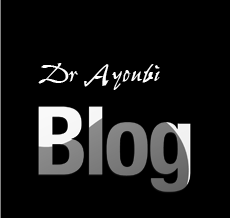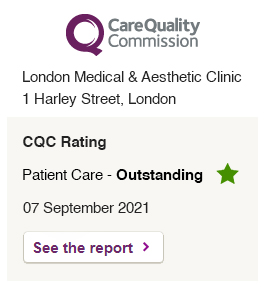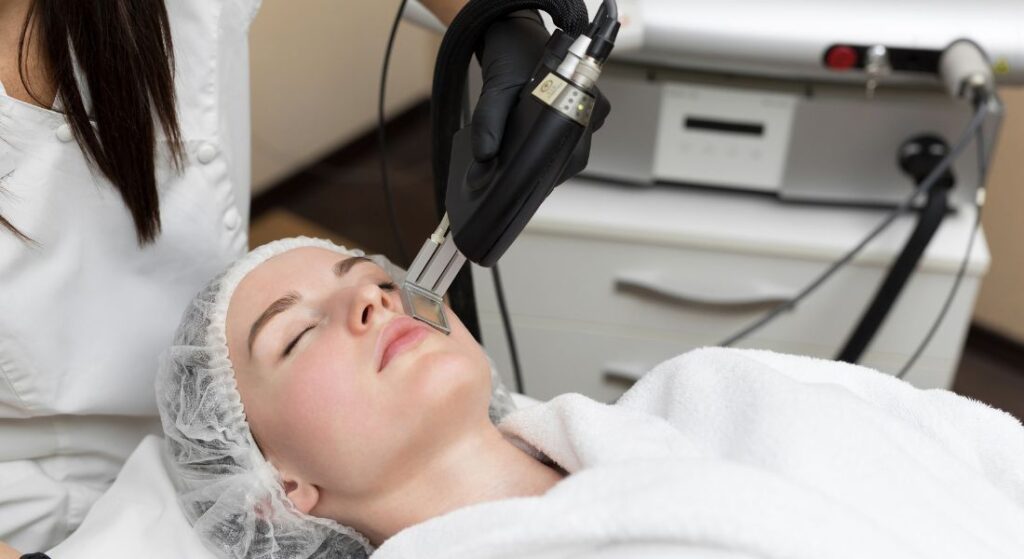
If you’ve been considering CO2 laser resurfacing, you’re probably excited about the promise of smoother, firmer, and younger-looking skin. But like any effective treatment, it comes with a recovery process and that can feel daunting if you don’t know what to expect.
So, how long does it actually take to recover from CO2 laser resurfacing? The answer depends on factors like the depth of treatment, your skin type, and how well you follow aftercare.
In this article, I’ll break down the recovery timeline step by step, from the first few days of redness and peeling to when you can confidently return to work and social life. By the end, you’ll know exactly what to expect during healing and how to make the process as smooth as possible.
Why Recovery Matters
Understanding the recovery process is just as important as understanding the treatment itself. CO2 laser resurfacing works by creating controlled damage to the skin, which triggers healing and collagen production.
This means your skin needs time to repair itself. The better you manage recovery, the better your results will be. Knowing the timeline helps you plan around social events, work, and other commitments so you’re not caught off guard.
Recovery also involves taking steps to protect your skin from infection and irritation. Following your clinician’s advice on cleansing, applying prescribed ointments, and avoiding sun exposure is crucial for preventing complications and ensuring smooth healing.
Finally, patience is key. Visible improvements often continue to develop over weeks or even months as collagen remodels and skin texture improves. By respecting the recovery process, you give your skin the best chance to achieve long-lasting, radiant results.
The Immediate Aftermath (Day 1–3)
Right after your procedure, your skin will look and feel like it’s had a sunburn. Expect:
– Redness and swelling in the treated areas.
– A warm or stinging sensation, especially in the first 24 hours.
– Some oozing or crusting as the skin begins to repair.
During this stage, your clinician will likely recommend:
– Applying soothing ointments to keep the skin moist and support healing.
– Sleeping with your head elevated to reduce swelling.
– Avoiding touching, scratching, or picking at your skin to prevent infection or scarring.
It’s best to stay indoors as much as possible and avoid sun exposure during these first days. In addition, gentle cleansing with a mild, non-irritating cleanser may be advised to keep the area clean, but always follow your clinician’s instructions carefully. Staying hydrated and maintaining a healthy diet can also help your skin recover more efficiently.
Early Healing (Day 4–7)
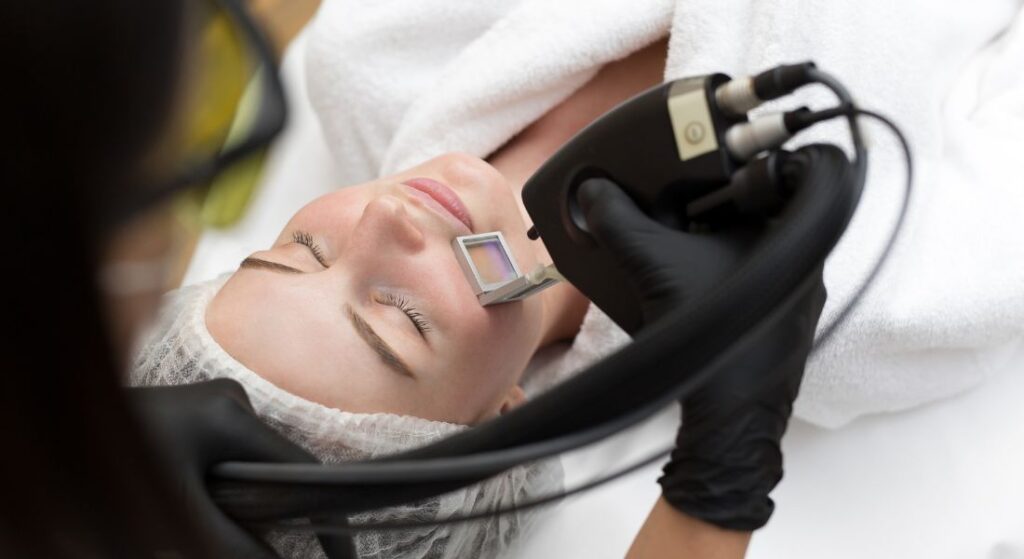
Peeling often begins around the fourth day for many patients. This is your body shedding the damaged outer layers of skin. While it may look worrying, it’s a sign that healing is underway.
You may notice:
– Brown or dark patches peeling away.
– Itching or tightness as new skin emerges.
– Continued redness, though swelling should start to reduce.
It’s crucial not to pick at peeling skin. Let it fall off naturally, or you risk scarring and uneven pigmentation. Keep applying soothing ointments and follow your clinician’s aftercare instructions closely to support smooth healing.
Most people feel well enough to work from home during this period, but you’ll still look visibly red and flaky if you need to attend in-person meetings. Avoid strenuous exercise or activities that may cause excessive sweating, as this can irritate the new skin. Gentle moisturisation and sun protection remain key, even indoors, to ensure the best results.
Transition Stage (Week 2)
By the second week, peeling is usually complete, and the new skin underneath is visible. This skin is pink, tender, and more sensitive than usual.
At this point:
– Redness might still be noticeable, especially in fairer skin tones.
– You can usually switch from ointments to a gentle, hydrating moisturiser.
– Daily application of high-factor sunscreen is essential to protect the healing skin from UV damage.
Some people feel comfortable returning to work at this stage, particularly if makeup can be used to cover lingering redness. However, attending social events where appearance matters may still feel uncomfortable for some.
It’s also important to continue avoiding harsh skincare products, exfoliants, or chemical treatments, as the skin is still in a delicate recovery phase. Patience now helps ensure the final results are smooth, even, and long-lasting.
Ongoing Redness (Weeks 3–6)
Sometimes, even after peeling has stopped, redness can linger for several weeks. This is completely normal as your skin continues to remodel itself, strengthen, and build new collagen beneath the surface. The pink hue you see is a sign that your skin is still actively healing.
– Light redness may persist for several weeks post-treatment, depending on the depth of the session and individual healing.
– The intensity and duration of redness depend on the depth and type of your CO2 laser session. Fully ablative treatments tend to leave more noticeable redness, while fractional treatments usually fade faster.
– Some patients may notice mild sensitivity in certain areas, particularly around the eyes or mouth, which is also normal and should gradually improve.
At this stage, most people are able to return fully to their normal routines. Makeup can usually mask residual redness effectively, and many patients feel confident attending work or social events.
However, your skin is still delicate, so it’s important to continue using high-factor sunscreen, avoid harsh skincare products or chemical exfoliants, and maintain gentle cleansing and moisturising habits. Keeping your skin hydrated and protected will help achieve the smooth, even, and radiant results you’re aiming for.
For some, minor pigmentation changes or uneven tone may still appear. These usually improve over the coming weeks, but monitoring your skin and consulting your clinician if anything seems unusual is recommended.
Long-Term Healing (Months 2–6)
By the second month, most of the visible redness has settled, and the true benefits of CO2 laser resurfacing start to emerge. You’ll notice smoother skin texture, more even tone, and tighter, firmer skin. These changes are the result of your body’s ongoing collagen production, which continues for up to six months after treatment.
Think of recovery not just as downtime but as an investment in long-lasting skin improvements. The gradual nature of this process means your skin will continue to refine and strengthen over time, often giving you better results than what is visible immediately after the procedure.
By months three or four, most patients notice their skin looking healthy and natural, with minimal sensitivity. Most patients can resume all normal skincare routines, including mild exfoliation, and enjoy makeup-free confidence. Daily SPF remains essential to protect your newly rejuvenated skin from sun damage and to preserve the results for years to come.
Some patients may notice subtle improvements continuing up to six months post-treatment, particularly in skin elasticity and overall radiance. Regular follow-ups with your clinician can help monitor progress and provide guidance on maintenance treatments if needed.
When Can You Return to Work and Social Life?

This is one of the biggest concerns for most patients. The timeline for returning to work and social activities depends on the intensity of your treatment and how your skin heals, but here’s a practical guide:
– Work from home: Most patients feel comfortable returning within a a day or two, depending on their comfort level and ability to manage mild redness or discomfort.
– Office work: Many people are able to resume office work within a few days to two weeks, although visible redness and peeling may still be present. Makeup can help cover residual redness if needed.
– Social events: Patients often feel ready for social gatherings after two weeks, once the skin has smoothed and peeling has largely stopped.
– Special occasions: For weddings, photoshoots, or important events, it’s generally advisable to allow four to six weeks, especially after deeper treatments, though individual healing may vary.
If you’re considering CO2 laser treatment in London, it’s wise to plan your sessions around your schedule. Many patients choose quieter work periods or book treatments just before a holiday, giving themselves time to stay indoors and fully follow aftercare instructions.
Remember, everyone’s skin heals differently, so it’s always best to discuss your lifestyle and upcoming commitments with your clinician before scheduling treatment. This ensures you get the best results without unnecessary stress about timing.
Factors That Influence Recovery Time
Not everyone heals at the same pace. Several factors play a role:
Depth of treatment: Deeper sessions mean longer recovery but bigger results.
Skin type: Fair skin often looks red for longer, while darker tones risk pigmentation.
Aftercare routine: Following instructions speeds healing and prevents complications.
Lifestyle: Smoking, poor diet, or sun exposure can slow recovery significantly.
Being aware of these factors helps you set realistic expectations.
Tips to Speed Up Recovery
While you can’t rush biology, you can support your skin’s healing process:
Stay hydrated: Drink plenty of water to help skin repair.
Use recommended products only: Don’t experiment with harsh creams or exfoliants.
Avoid sun exposure: Even brief exposure can cause pigmentation on healing skin.
Rest: Give your body time to focus on healing.
Avoid alcohol and smoking: Both slow down recovery and collagen formation.
Your clinician may also recommend supplements or medical-grade skincare to support healing.
Risks During Recovery
Most people recover smoothly after CO2 laser resurfacing, but complications can occur if aftercare is not properly followed. Being aware of potential risks helps you respond quickly and protect your results.
Watch out for:
Signs of infection: Increased pain, swelling, pus, or fever. These are early warning signs that require prompt medical attention.
Excessive scarring or keloid formation: Picking at peeling skin or ignoring post-procedure instructions can increase the risk of scarring, especially in those prone to keloids.
Unusual pigmentation changes: Dark or light patches that don’t fade over time may indicate post-inflammatory hyperpigmentation or hypo-pigmentation.
Other factors may affect recovery, such as overexposure to sunlight, early use of harsh skincare products, or insufficient moisturisation. If anything feels off whether it’s prolonged redness, unexpected swelling, or persistent discomfort contact your clinician immediately rather than waiting it out. Early intervention ensures a safer recovery and helps you achieve the best possible results.
Comparing Recovery with Other Treatments
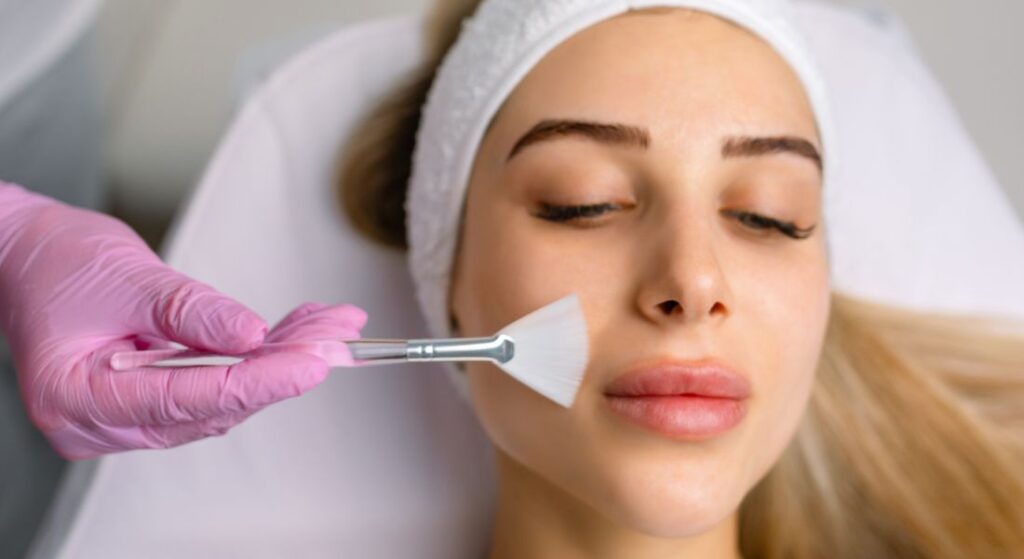
If you’re still unsure about CO2 laser resurfacing, it can help to compare recovery times and expectations with other common skin treatments:
Chemical peels: Typically involve mild downtime, usually under a week. Redness and peeling are usually less intense, but results are more subtle and may require multiple sessions.
Microneedling: Causes redness for 1–2 days only, with minimal peeling. While effective for mild texture improvements, it usually doesn’t achieve the same dramatic results as CO2 laser resurfacing.
This trade-off between downtime and results is why many patients choose CO2 laser resurfacing despite a slightly longer recovery period. With careful aftercare, the investment in recovery pays off with noticeable, lasting improvements that other treatments often cannot match.
Planning Your Recovery Around Life
One of the smartest things you can do is plan your recovery around your lifestyle and upcoming commitments. If you have weddings, business trips, photoshoots, or holidays coming up, it’s best to schedule your treatment at least two months in advance.
This allows enough time for visible redness to subside and for your skin to fully reveal its smoother, rejuvenated appearance. Planning ahead also gives you the flexibility to stay indoors during the initial recovery period and follow aftercare instructions without feeling rushed.
For patients with busy schedules, choosing quieter work periods or booking treatments just before a holiday can make a significant difference. By aligning your CO2 laser session with your lifestyle, you can enjoy the benefits of the treatment while minimizing disruption to your daily life.
FAQs for CO2 Laser Resurfacing Recovery:
1. How long does redness last after CO2 laser resurfacing?
Redness is a normal part of the healing process and varies depending on the depth of treatment and your skin type. Most patients notice that redness begins to fade after the first week, but light redness can persist for up to six weeks, particularly after deeper sessions. Fairer skin tones often show redness for longer periods, while darker skin tones may experience temporary pigmentation changes. Using gentle moisturisers and high-factor sunscreen helps the skin recover evenly and reduces the risk of prolonged irritation.
2. When will peeling start and how long does it last?
Peeling usually begins around day four after treatment as your skin naturally sheds the damaged outer layers. The duration of peeling depends on the intensity of the laser session, ranging from a few days to over a week. It is essential not to pick at peeling skin, as this can increase the risk of scarring or uneven pigmentation. Letting the skin peel naturally, combined with regular moisturisation, supports a smooth and healthy recovery.
3. Can I go back to work after CO2 laser resurfacing?
Returning to work depends on the depth of your treatment and your comfort level. Many patients feel able to work from home within a few days, depending on their comfort level and ability to manage mild redness or discomfort while following aftercare. For office-based work, most people can safely return after a few days to two weeks, once significant redness and peeling have subsided. Makeup can also be used to conceal residual redness if you need to be in public-facing roles, helping you feel more confident during the recovery phase.
4. When is it safe to attend social events?
Most patients are comfortable attending social events after a couple of weeks, once peeling has largely stopped and the skin begins to look smoother, though individual healing may vary. For more formal events such as weddings, photoshoots, or special occasions, it is advisable to allow at least 4–6 weeks for full recovery. This ensures that redness has faded, the skin has fully healed, and you can enjoy your rejuvenated appearance with confidence.
5. What aftercare steps are essential for a smooth recovery?
Proper aftercare is crucial to achieving the best results. Essential steps include applying prescribed ointments or gentle moisturisers to keep the skin hydrated, avoiding sun exposure and using high-factor sunscreen daily, and refraining from picking, scratching, or exfoliating the healing skin. Staying hydrated, eating a balanced diet, and avoiding alcohol or smoking also support faster recovery and help the skin regenerate effectively. Following these instructions carefully can significantly reduce the risk of complications.
6. Are there any risks during recovery?
While most patients recover without complications, there are potential risks if aftercare is neglected. Signs of infection, such as increased pain, pus, or fever, can occur, as well as excessive scarring or keloid formation in some individuals. Unusual or persistent pigmentation changes may also appear. If you notice anything concerning during your recovery, it is important to contact your clinician immediately, as early intervention ensures safer healing and helps protect your results.
7. How does CO2 laser recovery compare to other treatments?
Compared to other skin rejuvenation treatments, CO2 laser resurfacing has a longer recovery period but delivers more dramatic results. Chemical peels usually have mild downtime, often less than a week, but the effects are more subtle and may require multiple sessions. Microneedling typically causes redness for only 1–2 days with minimal peeling. In contrast, CO2 laser resurfacing involves 1–2 weeks of visible downtime, but the benefits include smoother texture, improved tone, and longer-lasting results. Many patients consider the slightly longer recovery period worthwhile for these superior outcomes.
8. Can lifestyle factors affect recovery?
Yes, lifestyle choices can significantly influence how quickly your skin heals. Smoking, alcohol consumption, poor diet, and sun exposure can slow down the recovery process and impact collagen production. Maintaining a healthy lifestyle, staying well hydrated, and protecting your skin from UV rays can accelerate healing, reduce complications, and enhance the final results of your treatment.
9. How long until I see full results?
Initial improvements in skin texture and tone are often noticeable within a few weeks of treatment. However, collagen production continues for up to six months, meaning your results will improve gradually over time. During this period, your skin becomes firmer, smoother, and more radiant, making the recovery process feel like a long-term investment in healthier, younger-looking skin.
10. Who should perform my CO2 laser treatment?
Choosing an experienced clinician is essential for safe and effective results. At London Medical & Aesthetic Clinic, Dr Ayham Al-Ayoubi is a leading expert in CO2 laser resurfacing. His expertise ensures that patients receive personalised guidance throughout the treatment and recovery process, helping them achieve natural-looking, long-lasting results while minimising risks and downtime.
Final Thoughts: Expert Guidance for a Smooth CO2 Laser Recovery
CO2 laser resurfacing can deliver dramatic, long-lasting improvements in skin texture, tone, and firmness, but understanding the recovery process is key to achieving the best results. From the first few days of redness and peeling to the long-term improvements over several months, careful aftercare and planning around your lifestyle make all the difference.
If you’re considering a CO2 laser treatment in London, the expertise of your clinician matters. At London Medical & Aesthetic Clinic, Dr Ayham Al-Ayoubi is a leading expert in CO2 laser resurfacing, guiding patients through every stage of treatment and recovery to ensure safe, effective, and natural-looking results. By following professional advice and taking the recovery timeline seriously, you can enjoy smoother, rejuvenated skin with confidence.
References:
1. StatPearls. (2023). Laser Carbon Dioxide Resurfacing. https://www.ncbi.nlm.nih.gov/books/NBK560544/
2. JAMA Dermatology. (2003). A Prospective Survey of Patient Experiences After Laser Resurfacing. https://jamanetwork.com/journals/jamadermatology/fullarticle/479537
3. Campolmi, P., et al., 2012. Highlights of thirty-year experience of CO₂ laser use at the Department of Dermatology, University of Florence. Journal of Cosmetic and Laser Therapy, 14(6), pp. 276–282. Available at: https://pmc.ncbi.nlm.nih.gov/articles/PMC3347966/
4. Preissig, J., 2012. Current laser resurfacing technologies: A review. Journal of Clinical and Aesthetic Dermatology, 5(10), pp. 24–31. Available at: https://pmc.ncbi.nlm.nih.gov/articles/PMC3580982/
5. Frontiers in Physiology. (2023). Dynamic Panoramic Presentation of Skin Function After Fractional CO₂ Laser Treatment. https://www.sciencedirect.com/science/article/pii/S258900422301636X

